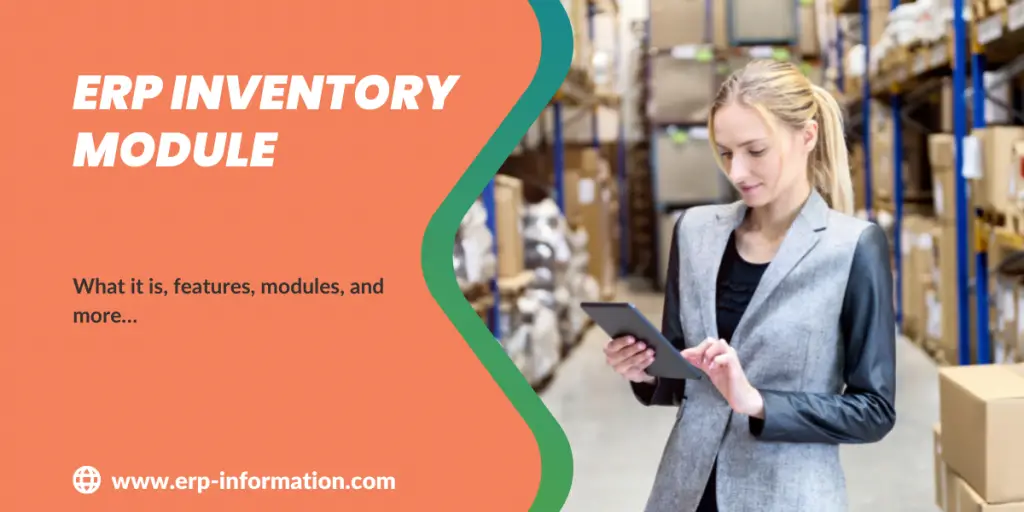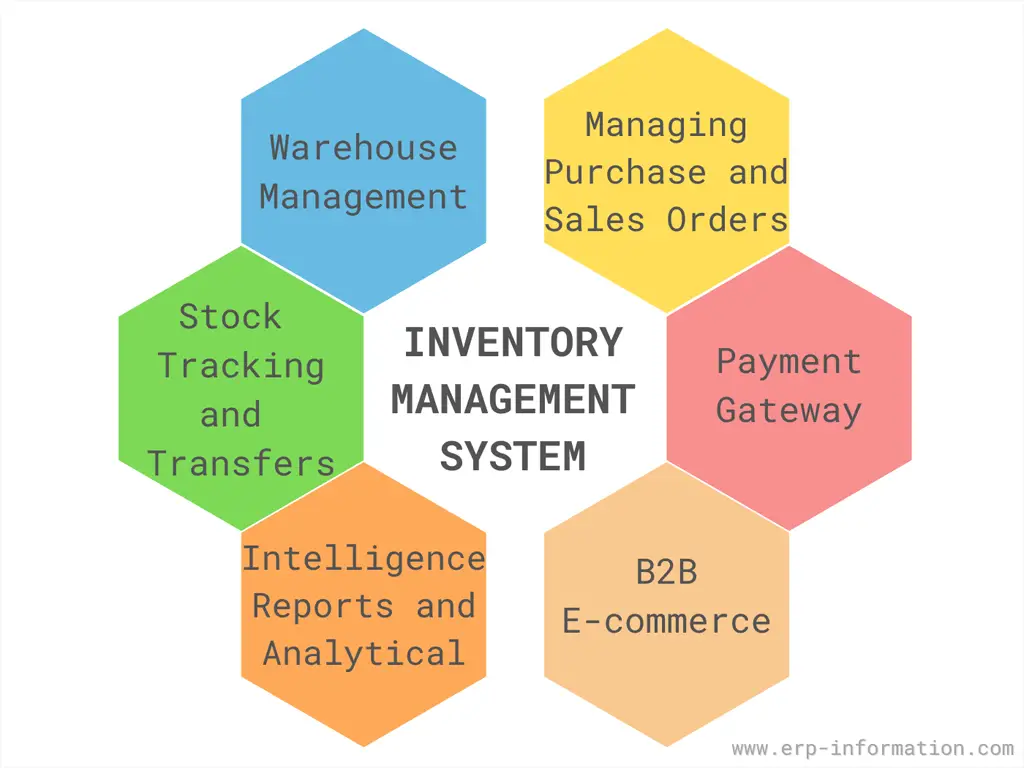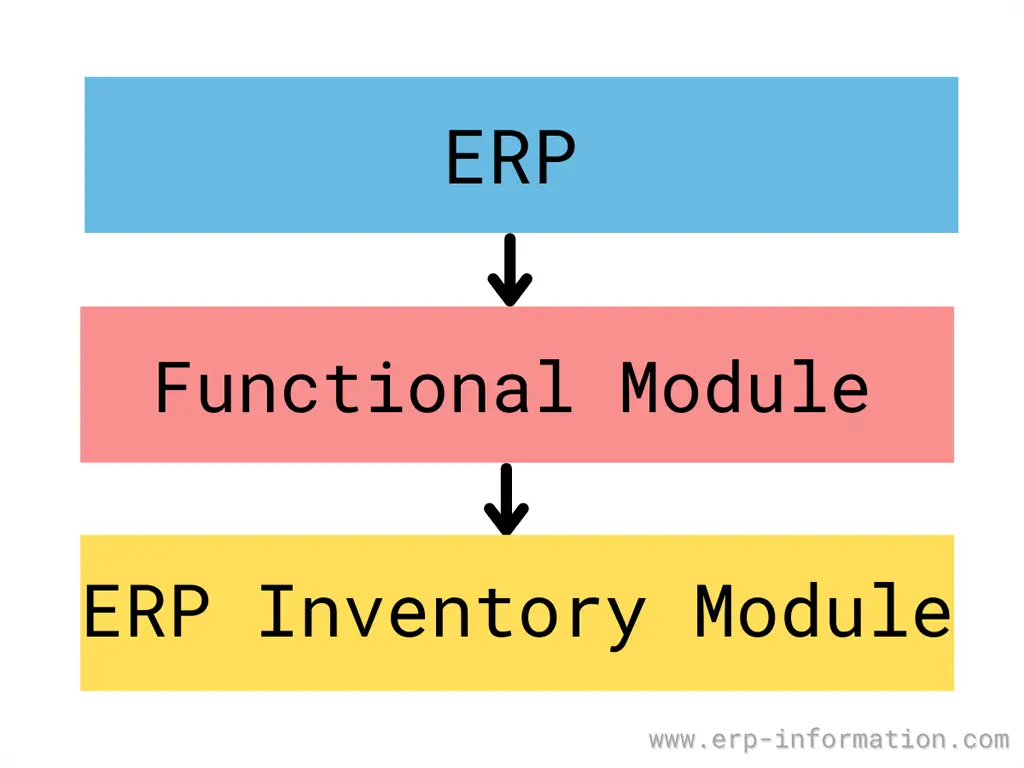Do you need to track and manage your inventory more effectively? If so, an ERP inventory module may be the right solution for you.
One of the most critical aspects of Enterprise Resource Planning is its inventory module. This module can help you keep track of every item in your stock, from raw materials to finished products.
This blog post will discuss the features of ERP’s inventory module and how it can benefit your business.
Features of ERP inventory management systems
A firm and stable inventory management system is critical to a business. The way you manage your inventory can make or break your business.
An ERP inventory software can ease the management of inventory operations. The system enables the control of the entire inventory from a single location.
Stock tracking and transfers
This system enables the organization of specific items. For example, it can identify an item with an identification number and location.
The related term inventory records or perpetual inventory records are continuous accounts of the incoming materials, outgoing materials, and the balance on hand.
Warehouse management
ERP inventory increases the visibility of warehouse management systems. It allows real-time data to integrate with the system and reduces negative inventory.
Managing Purchases and the Sales Order
It consists of a tracking mechanism; that helps track the details of bought and sold items.
Payment gateway
ERP payment gateway enables the inventory system to buy or sell inventory items.
B2B e-commerce
Businesses are switching from offline to online stores. A B2B e-commerce solution helps wholesalers and retailers to sell to the masses, which empowers them to connect to the world.
Intelligence reports and analytics
ERP system creates detailed analytical reports, including all the aspects of the business, including inventory control and analysis.
ERP Inventory module assists in organizing and maintaining the warehouse. Analyzing the warehouse’s surplus stocks, rejections, and repairs enables your manufacturing unit’s smooth function.
Benefits of ERP Inventory Management System
The SME and large industries can handle complex inventory scenarios using ERP. An ERP inventory management model for an organization benefits in many ways.
End to End inventory analysis
ERP inventory gives a complete view of your inventory. It assists in stock optimization along with quality control. In addition, it optimizes and streamlines the entire inventory activities.
ERP inventory provides real-time analysis across all the operation and supply chain management activities.
Administration of stocks
ERP inventory assists in analyzing the items according to their cost, demand, and supply. It can measure things in different units.
It sets up the validation methods along with expiring dates for each item.
Warehouse management
ERP inventory management can track individual items or the entire batch. The system captures all the details of goods from their buying to sales.
In the case of complaints, the inventory system can backtrack the items or the entire batch.
Maintaining an adequate-amount
Decides and maintains the precise quantity of items stored. The inventory management techniques help to identify the right amount of items stored.
Quality checks
ERP Inventory maintains an adequate amount of items. As a result, it reduces the loss of storage and maintains the healthy flow of goods for production.
It is also helpful in managing the risk during crises by storing the surplus amount of goods.
Physical inventory
With an ERP system, you can audit your inventory, result, and analysis. In some cases, a manual check of inventory items is necessary — the item details displayed in the ERP system assists in performing audits. Physical inventory is also known as wall-to-wall inventory.
Inventory planning
There are different management techniques to handle inventory. These techniques differ as per the type of industry.
An ERP system helps in planning inventory management techniques. These techniques depend on the type of inventory.
ERP Inventory Module
The inventory module in ERP facilitates processes of maintaining the appropriate level of stock. Stock in the warehouse of the company.
The activities of inventory control involve,
- Identifying inventory requirements
- Setting targets
- Providing replenishment techniques and options
- Monitoring item usages
- Reconciling the inventory balances
- Reporting inventory status
The ERP inventory control module integrates with sales, purchase, and finance modules. This allows ERP systems to generate vigilant executive-level reports.
Features list of ERP inventory module
- Online status of item quantity. Quantity in terms of on-hand, available, reserved, ordered, to order. This also includes rejected, defective, re-workable quantities.
- Complete excise functionality and generation of excise registers
- Many levels of classification of items
- Quality control based on QC parameters
- Handling material rejections
- Rejected material dispatch to subcontractors
- Linking of GRN to PO and Invoice
- Gate pass that is returnable or non-returnable
- Cenvat claims for capital goods
- The analysis helps in maintaining optimum stock levels
- Physical verification of stock
- Reallocation of re-workable stock
- Many warehouses, branches, and regional offices
- Stock transfer, receipts from other warehouses
- Excisable items, definition, and chapter allocation
- Multiple units of measurement
- Alternate items for production planning
- Handling of non-stock low-value items like stationery
- Lot wise tracking of inventory at shop floor and leading stores
- Stock Valuation, LIFO, FIFO, and weighted average
- Material requisition from different requirement areas
- Purchasing and subcontracting
- Receiving material against sales order processing, material requirement, subcontracting, gate pass, and production requisition
- Landed rate of items
- Consolidation of all warehouses
- Consolidation at any level of the company hierarchy
The inventory module in ERP covers all stock-related functions of an organization. Stock management and valuation activities.
Forming any organization’s backbone generally takes a lot of time and resources.
It handles all the store activities, issues, dispatches, receipts, and quality control. The lot-wise stock of each item is maintained. In addition, various MISs are provided for tracking stock movement.
Cloud-Based Inventory Management
A cloud-based ERP system utilizes the power of accessing the cloud space from any device. As a result, multiple inventories located at various locations are manageable from a single location.
Supply chain industries use this. Using a Cloud-based type of inventory management system, you can
- Track each step and process of your inventory and warehouse
- Can see the stocks of multiple warehouses and their location
- Reduces the risk of being stock-out, as it locates the items across the various warehouses
- Tracing the items using their batch number, serial number, and prices given by suppliers is easy
- It creates inventory valuations of items. It uses the replacement cost, accounting cost, special cost, and average cost.
- Identifies the unused stock and frequently used or sold stock in each warehouse. This analysis helps the suppliers to know the often sold goods in a particular area.
- Optimizes the cost along with the constant supply of the goods
- Reduced the loose and can identify the expired goods
IoT and Blockchain in Inventory Management
Current ERP systems are ineffective in tracking real-time data automatically. Though the systems store data, it requires a human invention to enter the data.
Humans are prone to errors, so the existing ERP systems are not 100% reliable.
As the world becomes increasingly interconnected, businesses are looking for new ways to streamline operations and reduce costs. One promising development area is the integration of IoT and blockchain technology into enterprise resource planning (ERP) systems.
IoT sensors can be used to track inventory levels in real-time, providing data that can be used to optimize stock levels and prevent stockouts.
Meanwhile, blockchain can create a secure and transparent record of transactions, providing an immutable audit trail. By combining these two technologies, businesses can achieve a higher level of visibility and control over their inventory, leading to improved efficiency and reduced costs.
As these technologies continue to evolve, they are expected to have a transformative impact on the way businesses manage their operations.
FAQs
Can an ERP Inventory Management Module handle multi-location inventory tracking?
Yes, most ERP systems include features for managing inventory across multiple locations. This capability allows businesses with warehouses or stores in different locations to track stock levels, transfers, and replenishments accurately.
How does an ERP Inventory Management Module help with inventory optimization?
An ERP Inventory Management Module uses advanced algorithms and historical data to optimize inventory levels, reducing excess stock while ensuring adequate supply to meet demand. This optimization minimizes stockouts and improves cash flow.
What integration options are available for connecting an ERP Inventory Management Module with other systems?
ERP systems often offer integration options with various business systems such as accounting software, e-commerce platforms, and supply chain management tools. This seamless integration ensures data accuracy and facilitates efficient cross-functional processes.
Conclusion
An efficient and optimized inventory system can reduce the inventory cost. The ERP inventory management system manages the details of individual items.
Inventory management techniques help reduce the cost of inventory. These techniques are also helpful in managing risks and forecasting demand.
ERP system’s entire process can be automated and secured by integrating it with IoT and Blockchain.


